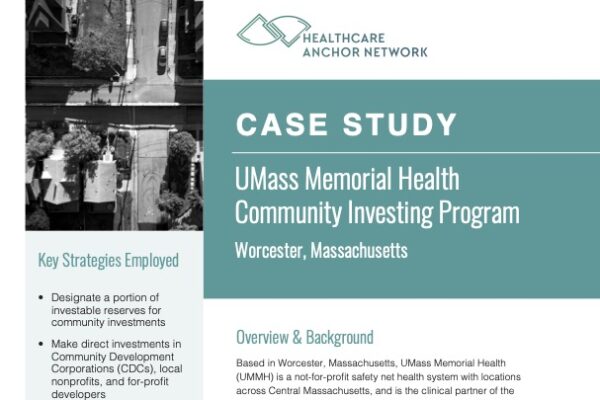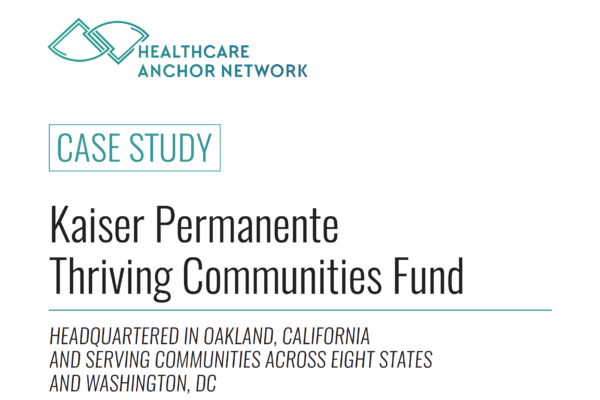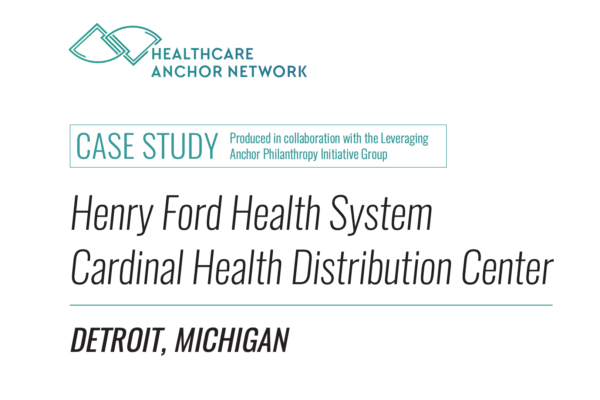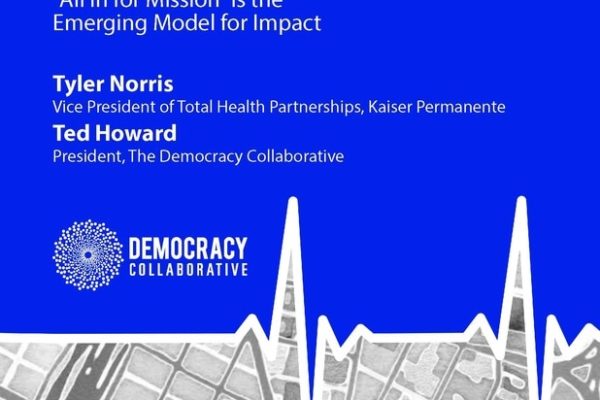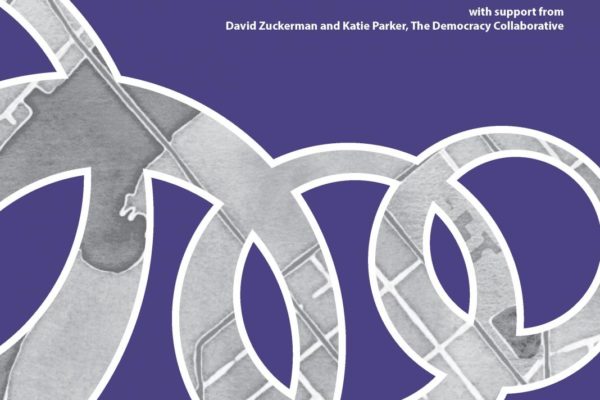UMass Memorial Health (UMMH)’s Community Investing Program is explored in a new case study. The case study covers the program’s inception and design, strategies employed, and key stakeholders involved. It also discusses several of the program’s projects, including Worcester Common Ground (WCG), Creative Hub Worcester (CHW), the Finally Home Fund, and the Tiny Home Village.
Continue ReadingPlace-based Investing
Trinity Health’s Community Investing Program
Trinity Health’s Community Investing Program is explored in a new case study. The case study covers the program’s history, design and implementation. The purpose of the program is to support projects, or loan pools, that will reduce social and economic disparities that cause unequal health outcomes for minority and low-income communities. These focus areas include […]
Continue ReadingKaiser Permanente Thriving Communities Fund
Kaiser Permanente’s Thriving Communities Fund is explored in a new case study. The case study covers the program’s inception and design, strategies employed, partnerships, key stakeholders involved. It also explores several of the program’s projects, including the Housing for Health Fund and the SDS Supportive Housing Fund.
Continue ReadingCommonSpirit Health Community Investing Program
CommonSpirit Health’s Community Investing Program is explored in a new case study. The case study covers the program’s inception and design, strategies employed, and key stakeholders involved. It also discusses several of the program’s projects, including Stocktonians Taking Action to Neutralize Drugs (STAND), the Hill Country Community Clinic, and California FarmLink.
Continue ReadingRush University System for Health Impact Investing Fund
Rush University System for Health’s (RUSH) Impact Investing Fund (“the Fund”) is explored in a new case study. The case study covers the Fund’s inception and design, strategies employed, and key stakeholders involved. In addition, it examines Rush’s partnerships with other local anchor institutions through West Side United (WSU) on place-based investing projects. Finally, it […]
Continue ReadingIntermountain Healthcare Local Impact Investing
Intermountain Healthcare’s local impact investing work is explored in a new case study. The case study covers the program’s inception and design, strategies employed, and key stakeholders involved. It also explores one of the program’s early initiatives, the Utah Housing Preservation Fund.
Continue ReadingHenry Ford Health System Cardinal Health Distribution Center Case Study
Cardinal committed to moving its warehouse operations from a location outside of Detroit into the neighborhood adjacent to Henry Ford Hospital. Distribution Warehouse represents a $30 million investment. Four local entities joined to build the warehouse resulting in the fruition of this place-based anchor mission project: Henry Ford Health System, Detroit Medical Center, Cardinal Health […]
Continue ReadingPlace-Based Investing: Creating Sustainable Returns and Strong Communities
The infographic below provides a quick overview of how place-based investing can create sustainable returns and strong communities.
Continue ReadingCan Hospitals Heal America’s Communities?
Healthcare’s role in creating healthy communities through increasing access to quality care, research, and grantmaking is being complemented by a higher impact approach; hospitals and integrated health systems are increasingly stepping outside of their walls to address the social, economic, and environmental conditions that contribute to poor health outcomes, shortened lives, and higher costs in the first place. Can hospitals and health systems heal America’s communities?
Continue ReadingEmbracing an Anchor Mission
Written by Randy Oostra, CEO of ProMedica, with the support of David Zuckerman and Katie Parker from The Democracy Collaborative, this report offers an in-depth look at how ProMedica—a member of the Healthcare Anchor Network —aligned its institutional operations and clinical practice to better tackle the social determinants of health. From an innovative hospital-owned grocery store in a food desert to investments in preserving affordable housing, this playbook details the Toledo, Ohio-based health system’s decade-long journey to understand how their resources could be used for the wellbeing of the communities they serve.
Continue Reading